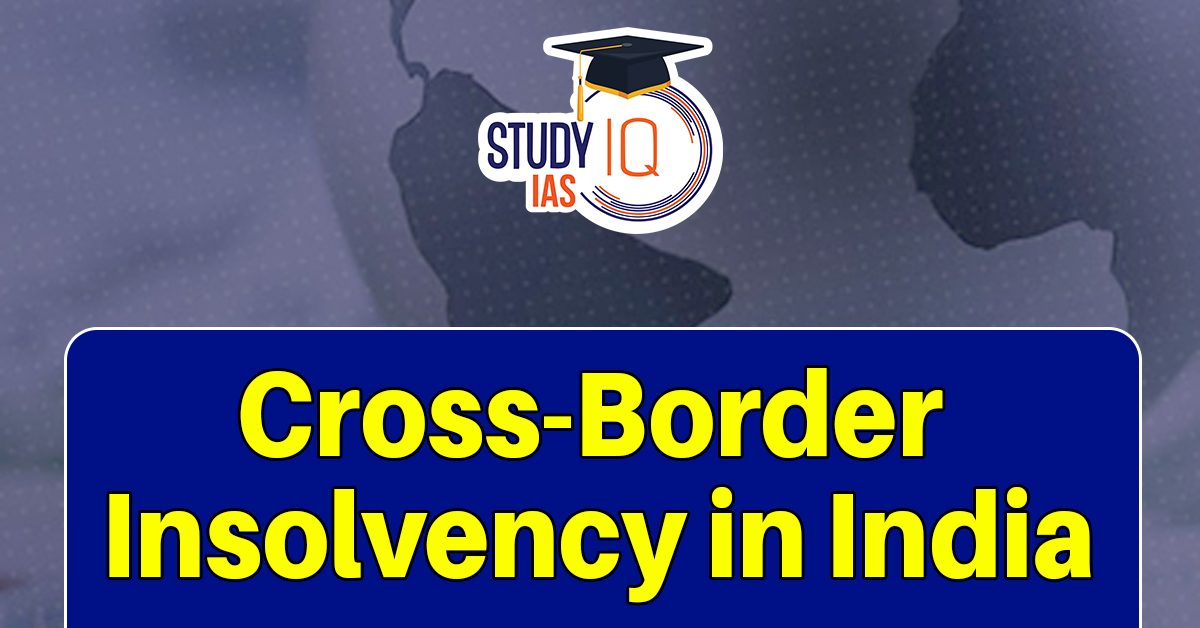Table of Contents
What is Cross-Border Insolvency?
- When an insolvent debtor has credit and/or debtors in more than one jurisdiction i.e. in different countries.
- In domestic insolvency proceedings, the Insolvency Professional performs several key tasks.
- First, they identify the assets owned by the debtor.
- Next, they determine which creditors are owed money and how much each one is owed.
- After this information is gathered, the claims are settled based on a priority rule.
- This settlement requires approval from the Adjudicatory Authority.
Insolvency Laws in India
Under British Rule
- Indian Insolvency Act (1848): The first insolvency law addressing domestic insolvencies.
- Presidency-Towns Insolvency Act (1909): Applied to Calcutta, Bombay, and Madras.
- Provincial Insolvency Act (1920): Governed insolvencies in mofussil regions.
- Limitations: These laws did not address cross-border insolvencies.
Post-Independence Period
- Laws remained unchanged despite the Third Law Commission’s recommendation in its 26th Report (1964) for modernisation.
- Cross-border insolvency discussions gained prominence during the 1990s with economic liberalisation.
- Multiple committees recommended adopting the United Nations Commission on International Trade Law (UNCITRAL) Model Law on Cross-Border Insolvency (1997):
- Eradi Committee (2000).
- Mitra Committee (2001).
- Irani Committee (2005).
- The Insolvency Law Committee recommended the adoption of the UNCITRAL Model Law in 2018.
- Parliamentary Standing Committee on Finance (2021 and 2024): Highlighted the need for immediate adoption of the Model Law to address the regulatory gap
- The Insolvency and Bankruptcy Code, 2016 (IBC) was introduced as the primary legislation governing insolvency and bankruptcy in India.
- Section 234 empowers the Indian government to enter into bilateral agreements with other countries to manage insolvency cases that cross borders.
- Section 235 permits Indian courts to seek assistance from foreign courts in handling the assets and affairs of a corporate debtor.
- Section 60(5): Restricts civil courts from exercising jurisdiction over insolvency matters, including cross-border cases.
- This section leaves the NCLT as the sole adjudicating authority.
| UNCITRAL Model Law (1997) on Cross-Border Insolvency: Key Features |
|
Challenges in Cross-Border Insolvency in India
The provisions in sections 234 & 235 of IBC remain unenforceable due to a lack of reciprocal arrangements and non-notification by the government.
| Key Case Studies |
|
- Absence of a structured framework for cross-border insolvency.
- Reliance on ad hoc protocols increases judicial burden and delays.
Challenges in Implementing the Model Law in India
- Jurisdictional Limitations: NCLT’s (National Company Law Tribunal’s) restricted powers in recognizing and enforcing foreign judgments could hinder implementation.
- Lack of Reciprocal Agreements: India needs bilateral agreements to operationalize cross-border insolvency provisions effectively.
- Judicial Expertise: Requires capacity-building for judges and insolvency professionals to handle complex cross-border cases.
- The NCLT faces resource constraints, with judges often handling multiple cases simultaneously. This situation contributes to significant delays in processing insolvency applications.
- Conflict with Domestic Laws: Harmonizing the Model Law with existing IBC provisions and other domestic laws is critical.
Reform Recommendations
- Adopting the UNCITRAL Model Law: Provides a structured framework for cross-border insolvencies.
- Reduces delays, transaction costs, and judicial burden.
- Modernising Communication Between Courts:
- Judicial Insolvency Network (JIN) Guidelines (2016) and Modalities of Court-to-Court Communication (2018): Enhance transparency and efficiency.
- Expanding NCLT’s Powers: Strengthening its jurisdiction will enable effective cross-border insolvency management.


 Serious Fraud Investigation Office (SFIO...
Serious Fraud Investigation Office (SFIO...
 Article 142 of Indian Constitution, Sign...
Article 142 of Indian Constitution, Sign...
 Pakistan-Occupied Kashmir (PoK): History...
Pakistan-Occupied Kashmir (PoK): History...





















